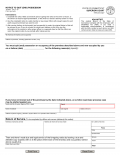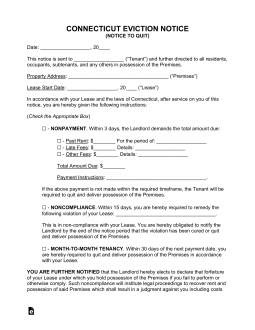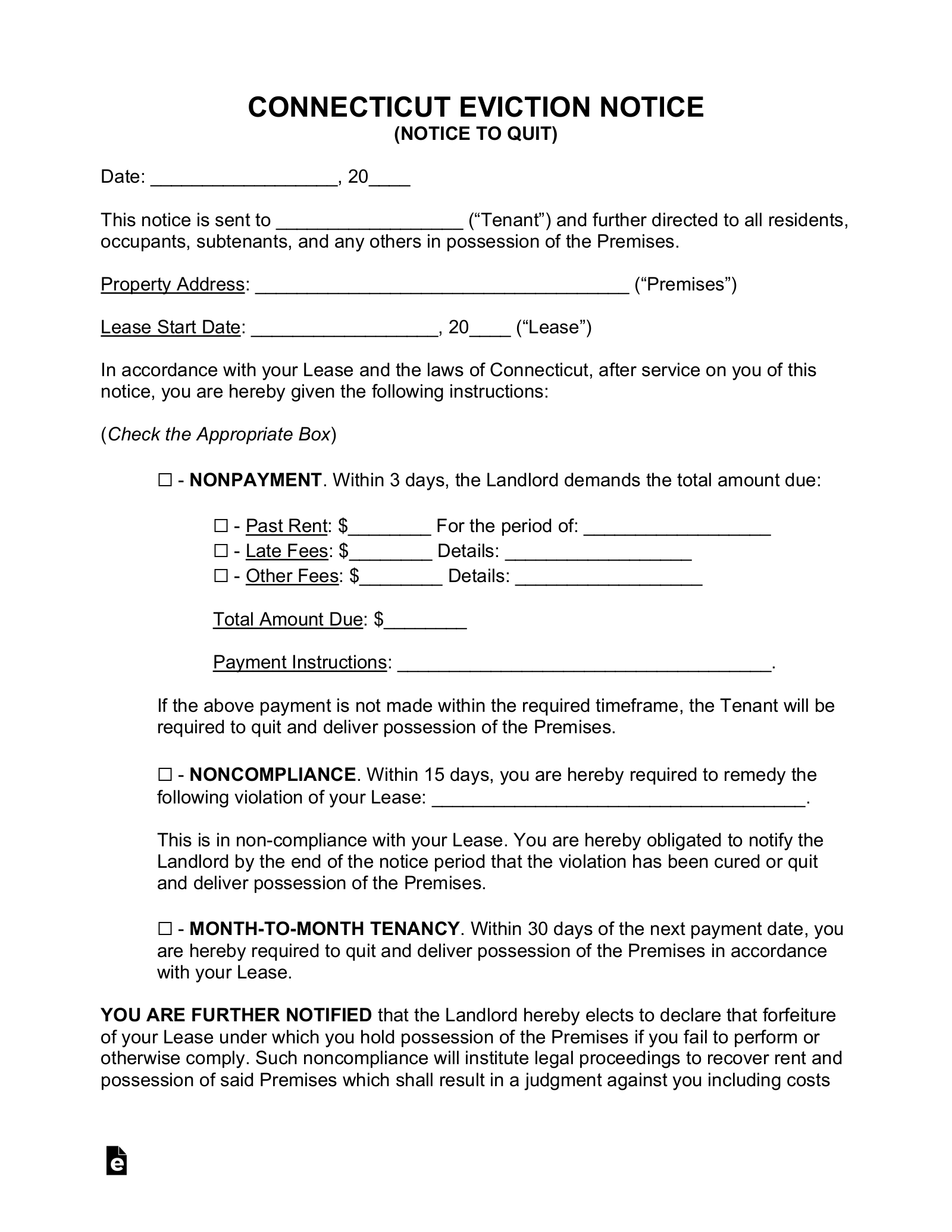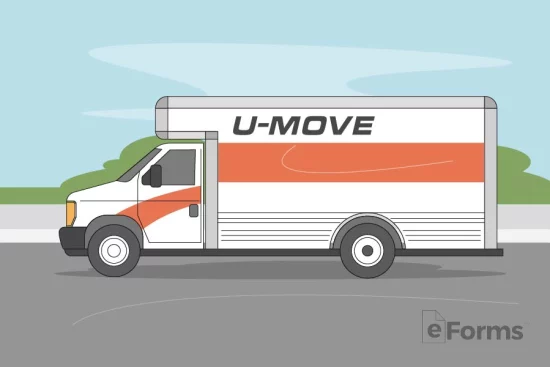Updated January 23, 2024
A Connecticut eviction notice is a letter used by landlords to inform a tenant they have breached their rental contract. The notice will include a description of how the tenant violated the lease and the number of days to remedy. At the end of the period, the landlord will have the right to evict if the tenant has not fixed the issue or vacated the premises.
By Type (2)
 3 / 15 Day Notice to Quit Possession (Non-Payment & Non-Compliance) – This notice requires the tenant to fix the issue, whether it is for not paying rent on time or another type of lease violation. 3 / 15 Day Notice to Quit Possession (Non-Payment & Non-Compliance) – This notice requires the tenant to fix the issue, whether it is for not paying rent on time or another type of lease violation.
Download: PDF |
 30-Day Notice to Quit (Month-to-Month Tenancy) – Connecticut law does not specify an exact amount of time required for canceling a lease; therefore, the landlord and tenant should view their signed agreement. 30-Day Notice to Quit (Month-to-Month Tenancy) – Connecticut law does not specify an exact amount of time required for canceling a lease; therefore, the landlord and tenant should view their signed agreement.
Download: PDF, MS Word, OpenDocument |
Table of Contents |
Eviction Laws
- Rent Grace Period: 9 days.[1]
- Non-Payment of Rent: 3 days.[2]
- Non-Compliance: 15 days.[3]
- Termination (Month-to-Month Lease): No statutorily defined notice period.
- Illegal Activity: Immediately. A notice to quit is not required in cases when the tenant is convicted of illegal use of the premises.[4]
- Eviction Lawsuit: Summary Process.[5]
Court Forms
Summons – This form is to be completed should the tenant not quit the premises in the given notice period. It is to be filed with the court clerk then served on the tenant indicating that they are being sued for possession of the property.
Complaint for lapse of time – The complaint for lapse of time is filed with the court clerk then served on the tenant to indicate the reason for which they are being sued (in this case staying on the premises beyond the parameters of their lease).
Complaint for Non-Payment of Rent – Like the above complaint, this is to be filed with the court clerk and served on the tenant to indicate that they have not paid rent and have stayed on the premises beyond the notice period granted in the notice to quit.
Answer to Complaint – The Answer to Complaint provides the tenant with the ability to contest the claims made against them. They must file the document with the clerk of court within two days of the return date.
Appearance – The Appearance must be filed in addition to the above Answer to provide the tenant’s intent on appearing in court.
Motion for Default Judgment for Failure to Appear – This document can be filed by the landlord should the tenant fail to file an Appearance. The failure to file an Appearance will result in a default judgment against the defendant.
Motion for Default Judgment for Failure to Plead – This document is also used by the landlord should the tenant fail to file an Answer. Again, a default judgment will be made against the tenant should this be the case.
Summary Process Execution For Possession (Eviction) – This form can be filed if the tenant, after having lost the case, has not vacated the premises after five (5) days of the ruling. The landlord can use this document to provide the tenant with a warning that they have twenty-four (24) hours to vacate or they will be removed by a state marshal.
Affidavit of Non-Compliance With Stipulation – This affidavit has to be filed to get an Execution for Possession in cases where there has been a violation of a payment condition of a stipulation judgment.
How to Evict a Tenant (4 steps)
2. File Documents
If the tenant fails to respond satisfactorily within the time allowed, the landlord has the option of filing an action in the Housing Session of the Connecticut Superior Court in the county in which the property is located. The documents to be filled out and filed with the court are as follows:
- Summons
- Complaint for lapse of time or a Complaint for Non-Payment of Rent
- Copy of Notice to Quit and Return of Service
The landlord will have to pay the fee of $175 to the court.[8]
4. Judgment
If the Tenant fails to respond within two days after the return date, the landlord may file a motion for default judgment. If the Tenant failed to respond, then the landlord can file a Motion for Default Judgment for Failure to Appear. If the Tenant fails to answer the complaint, the landlord can file Motion for Default Judgment for Failure to Plead.



